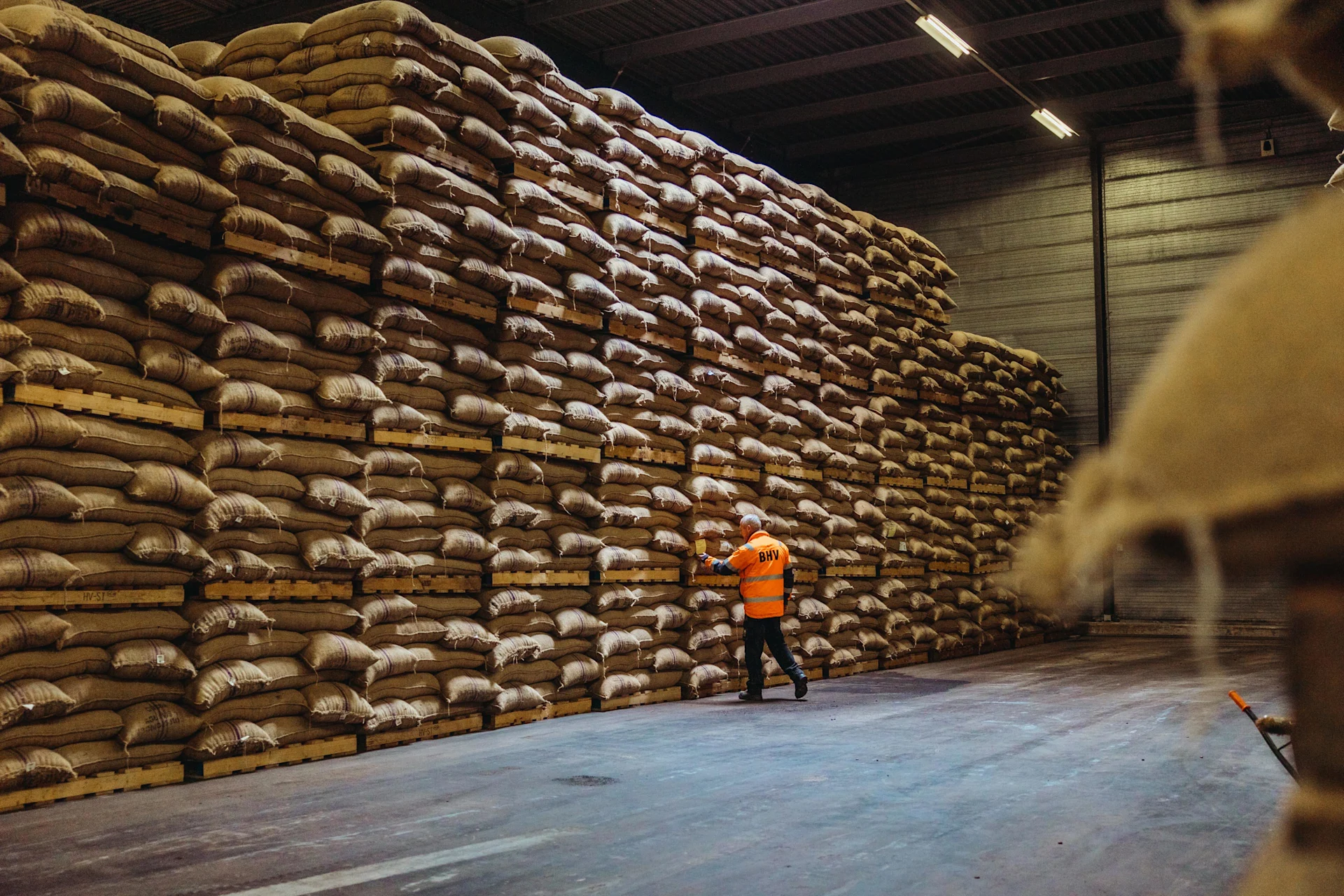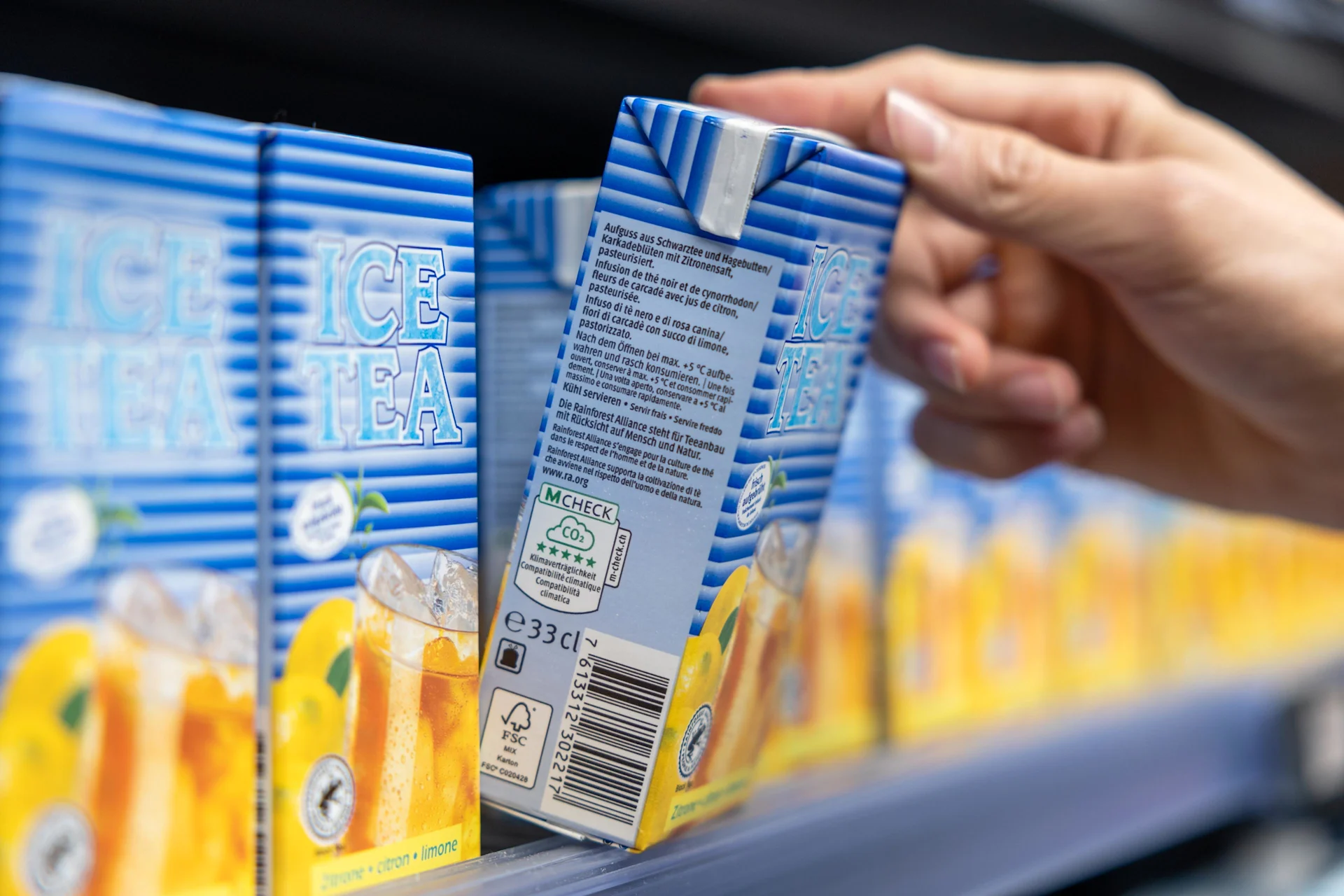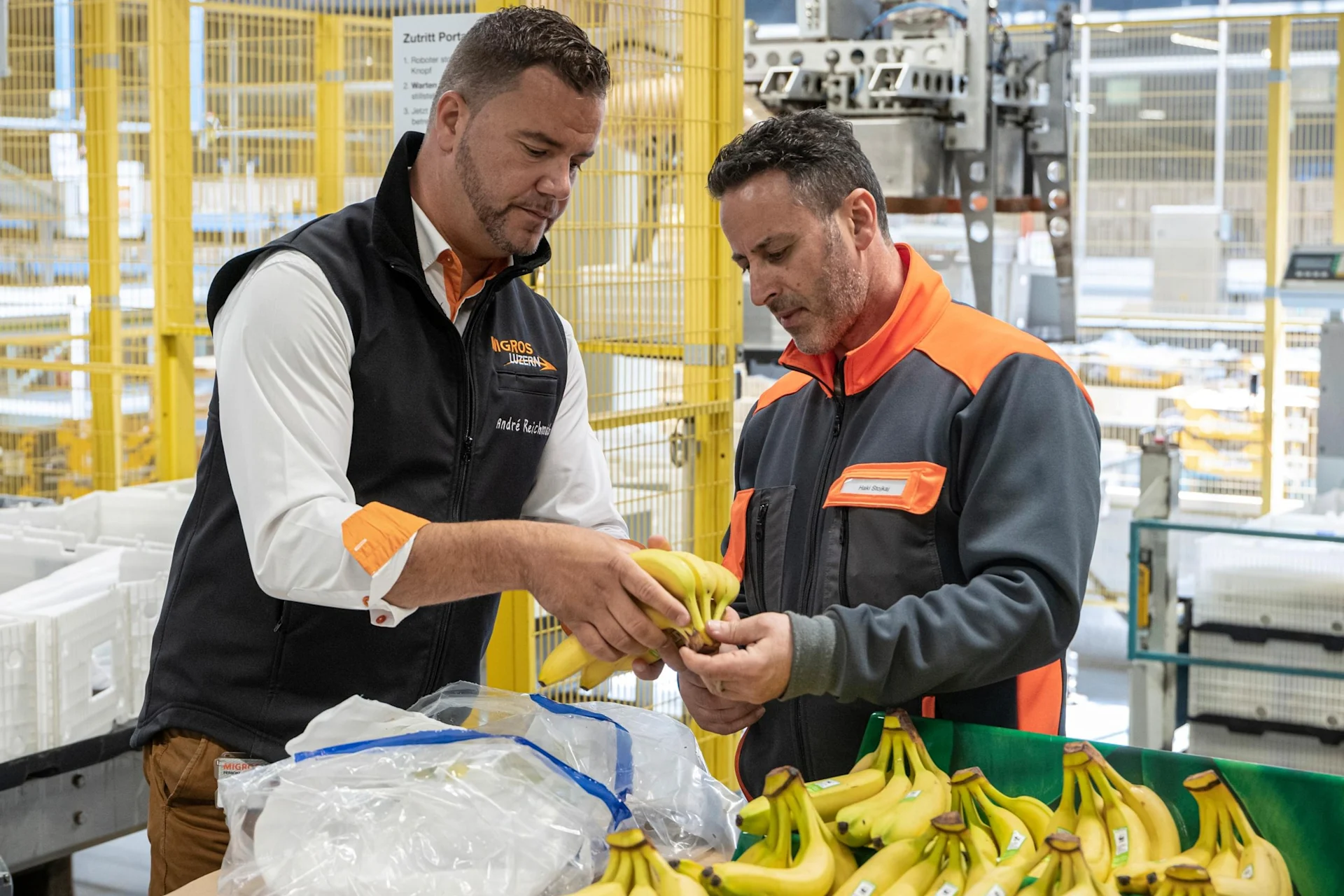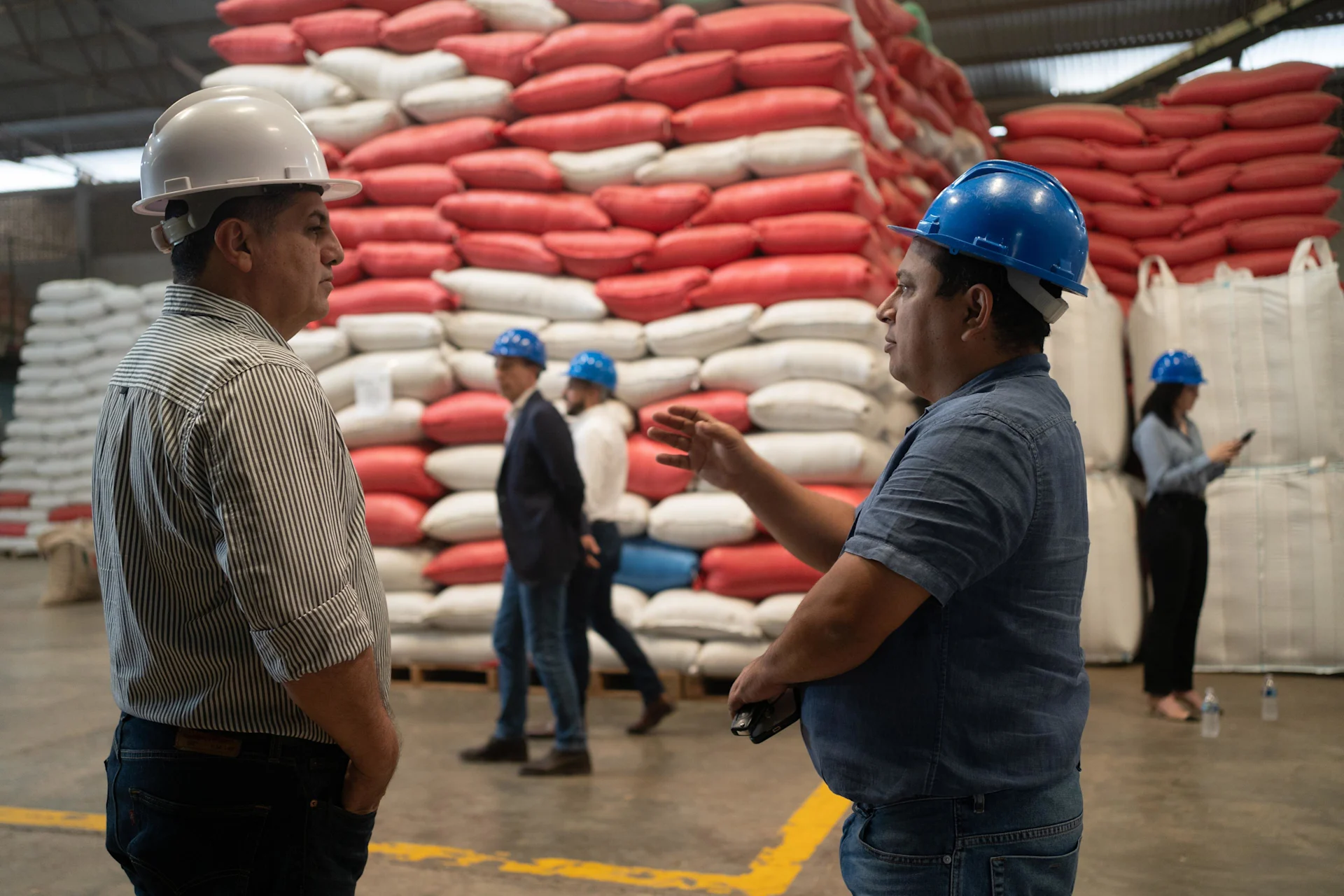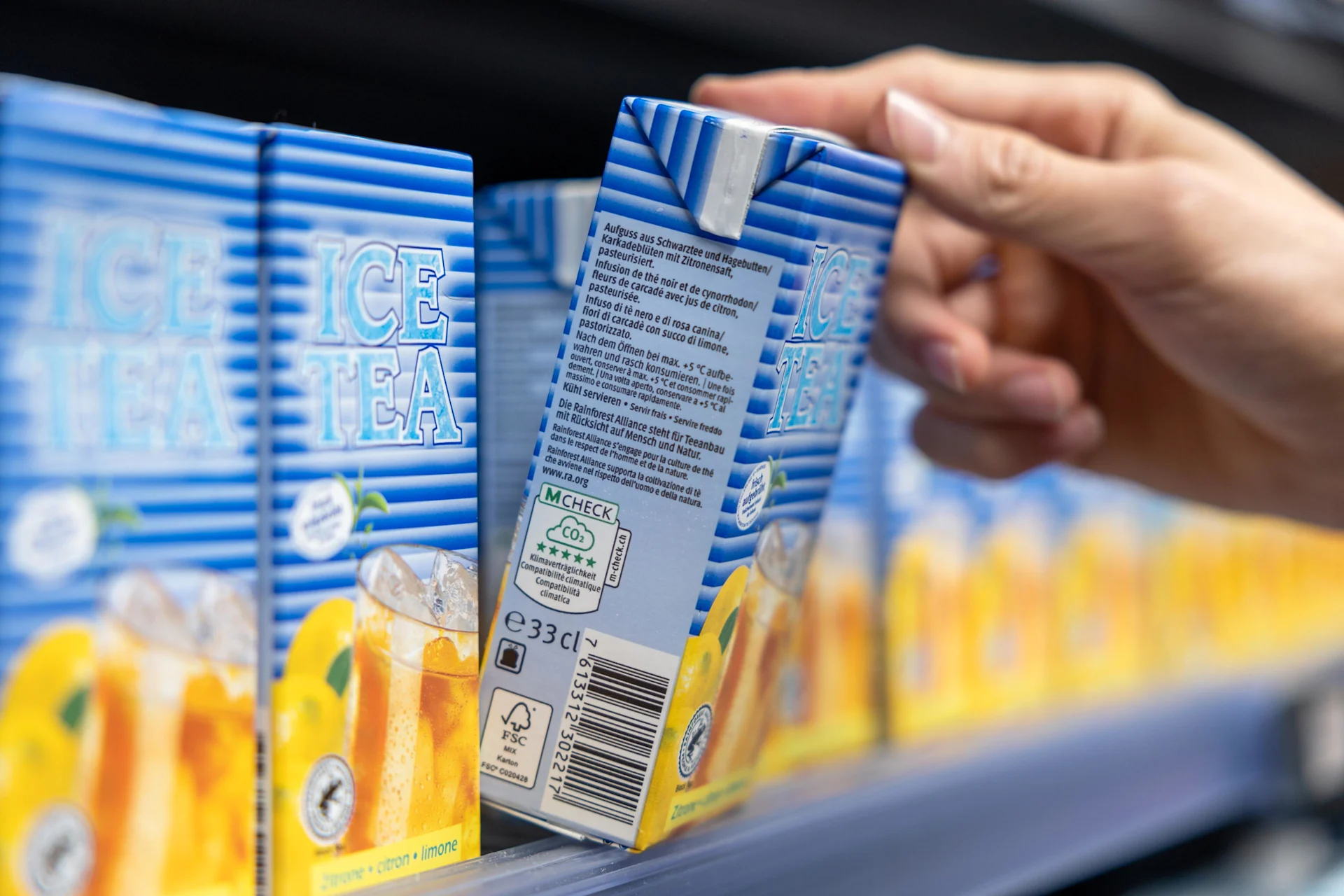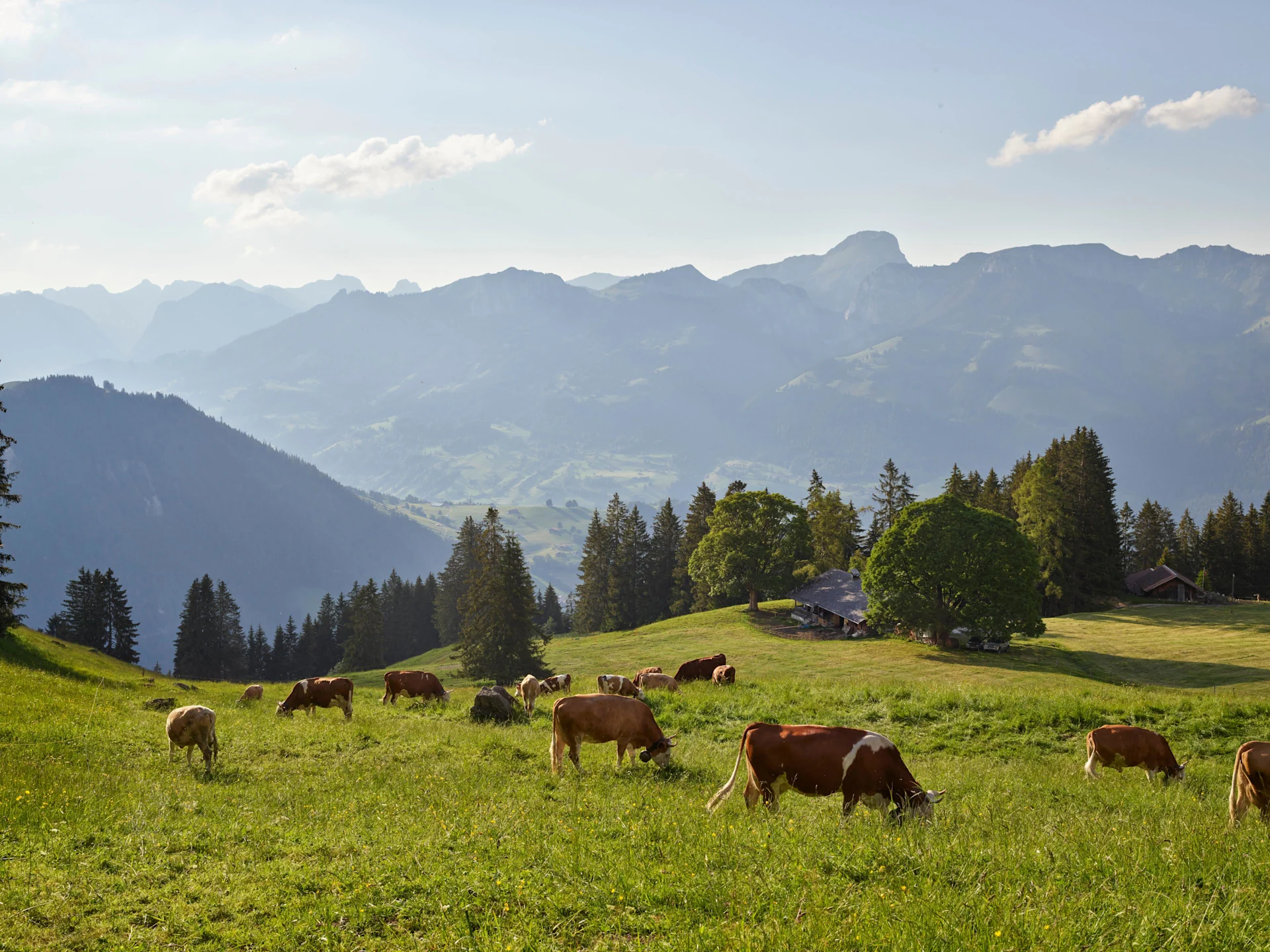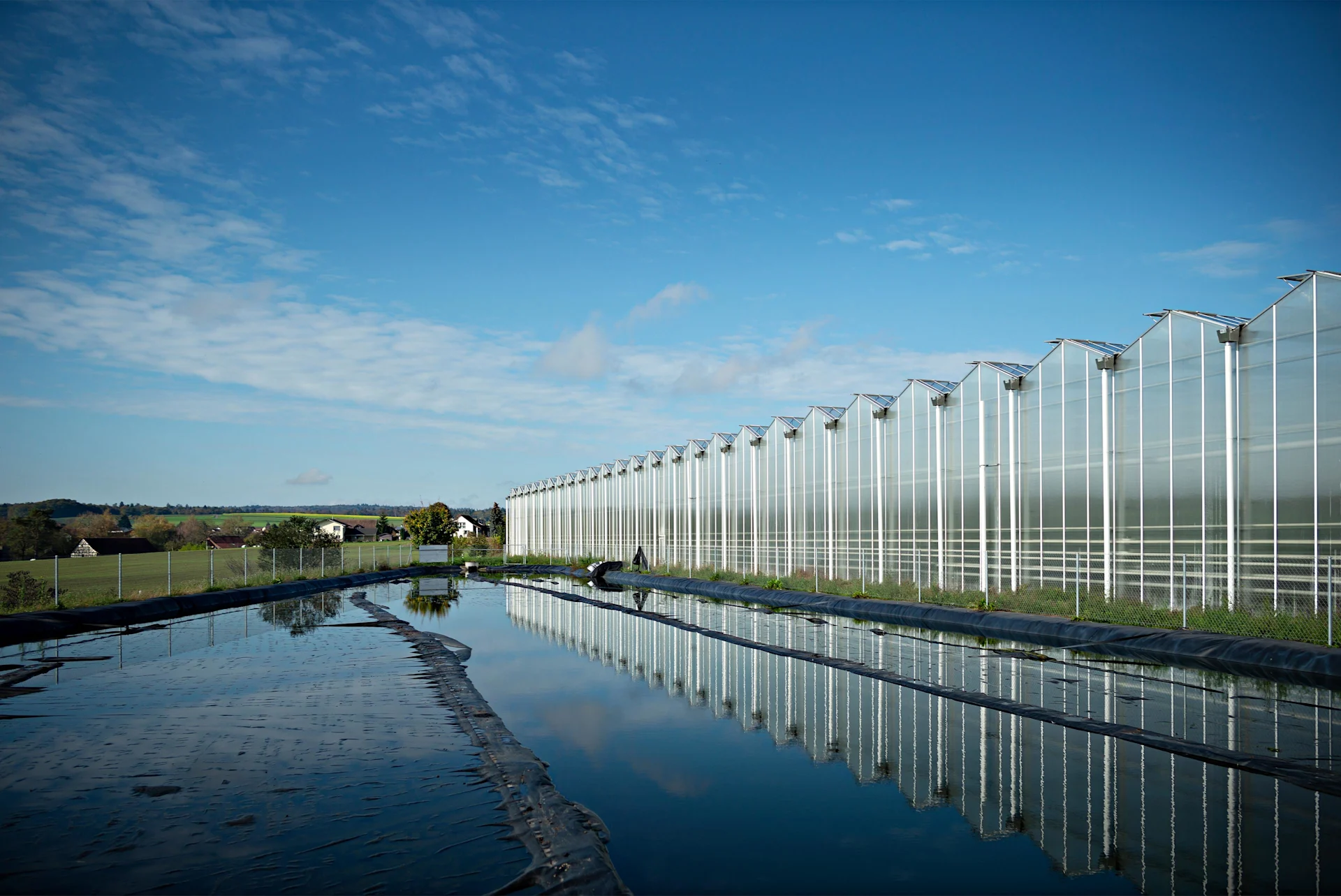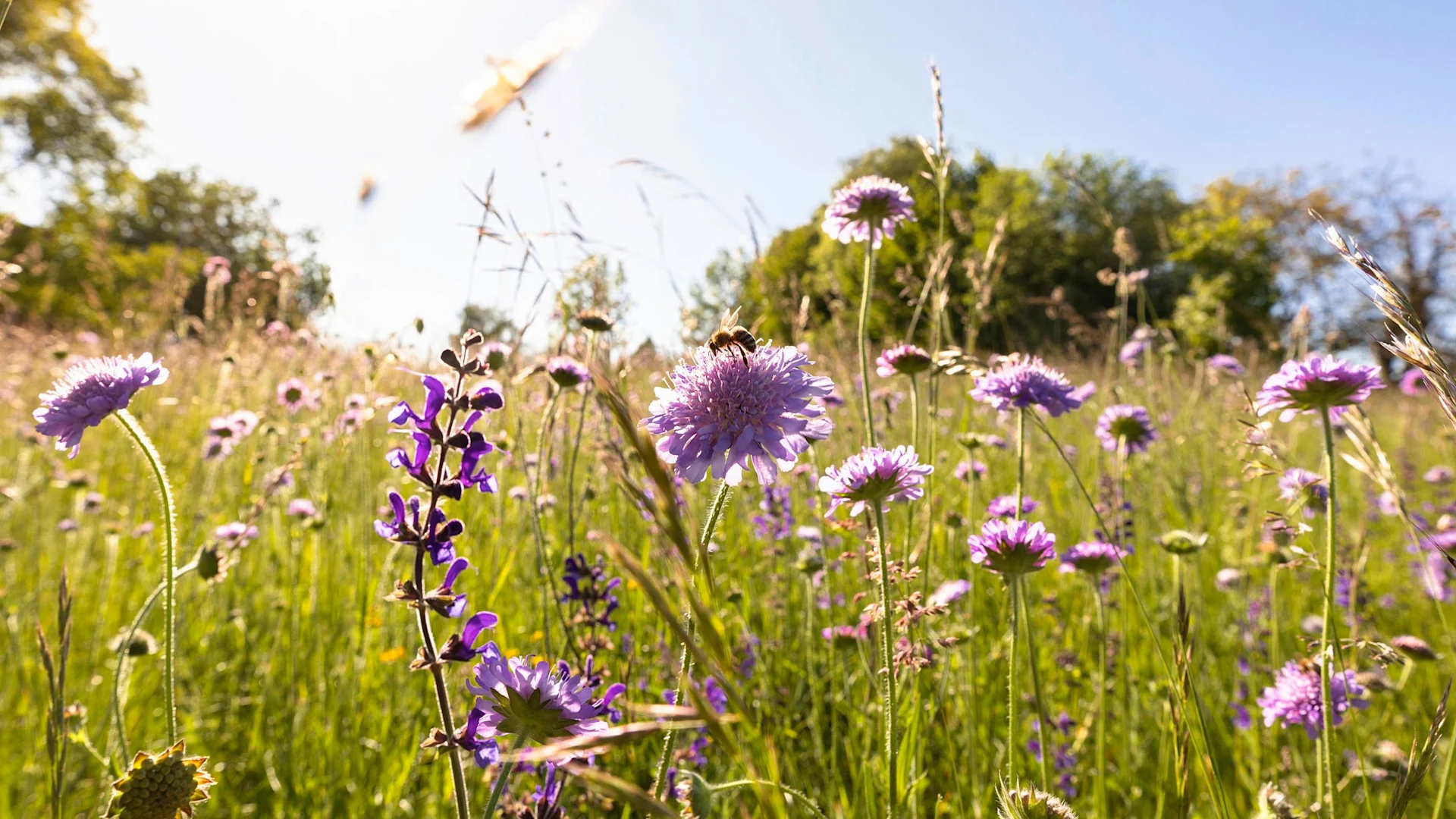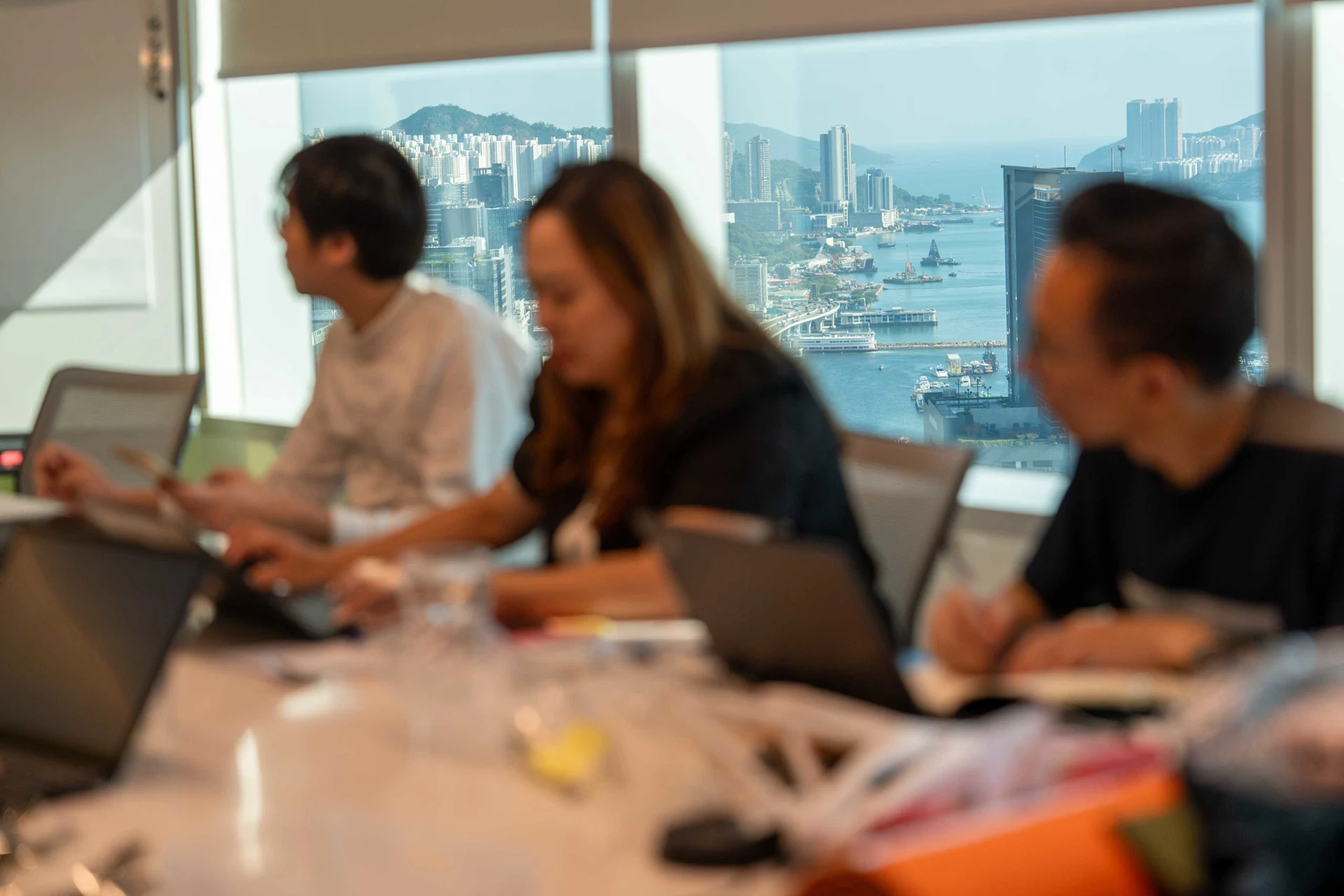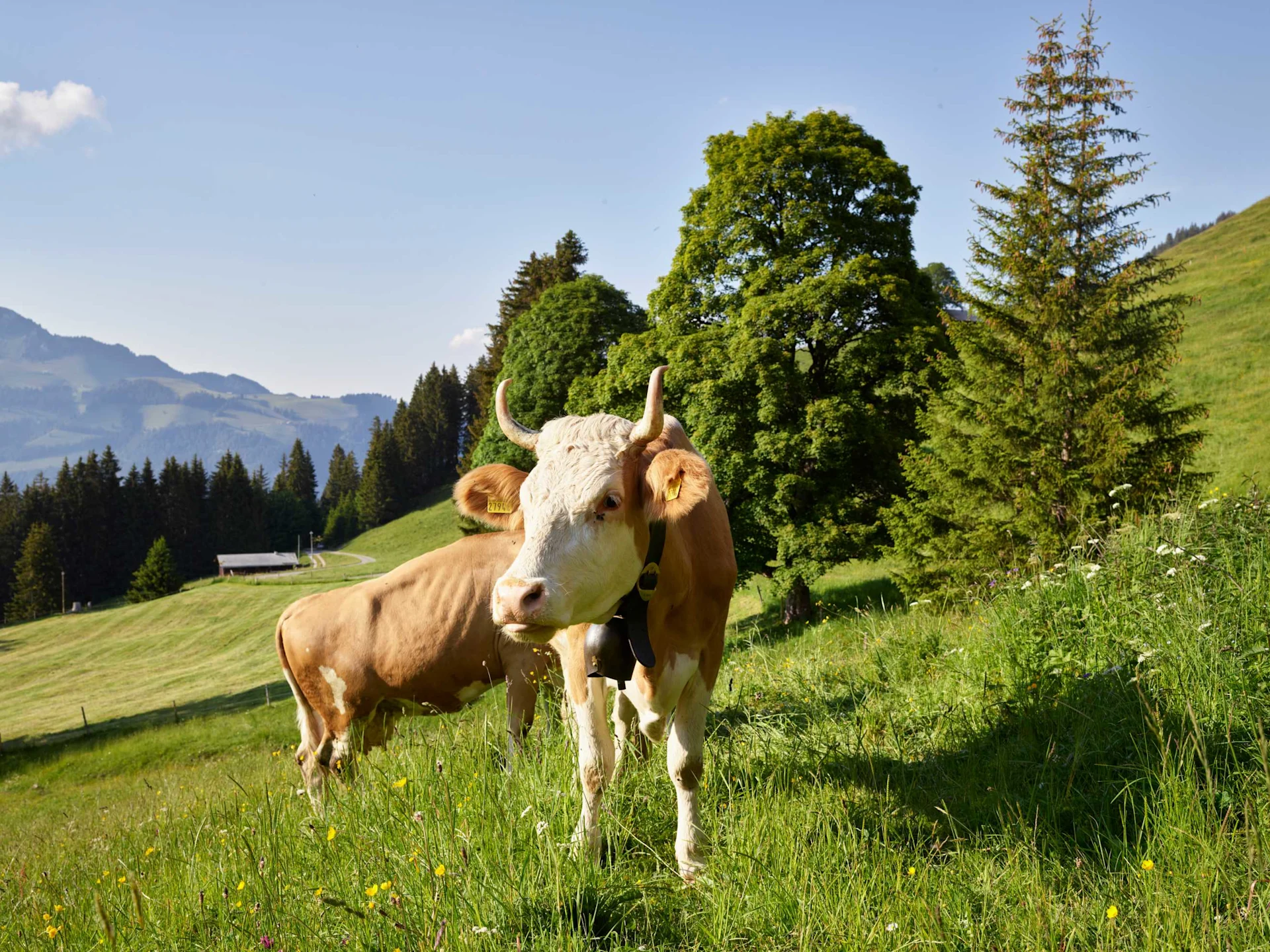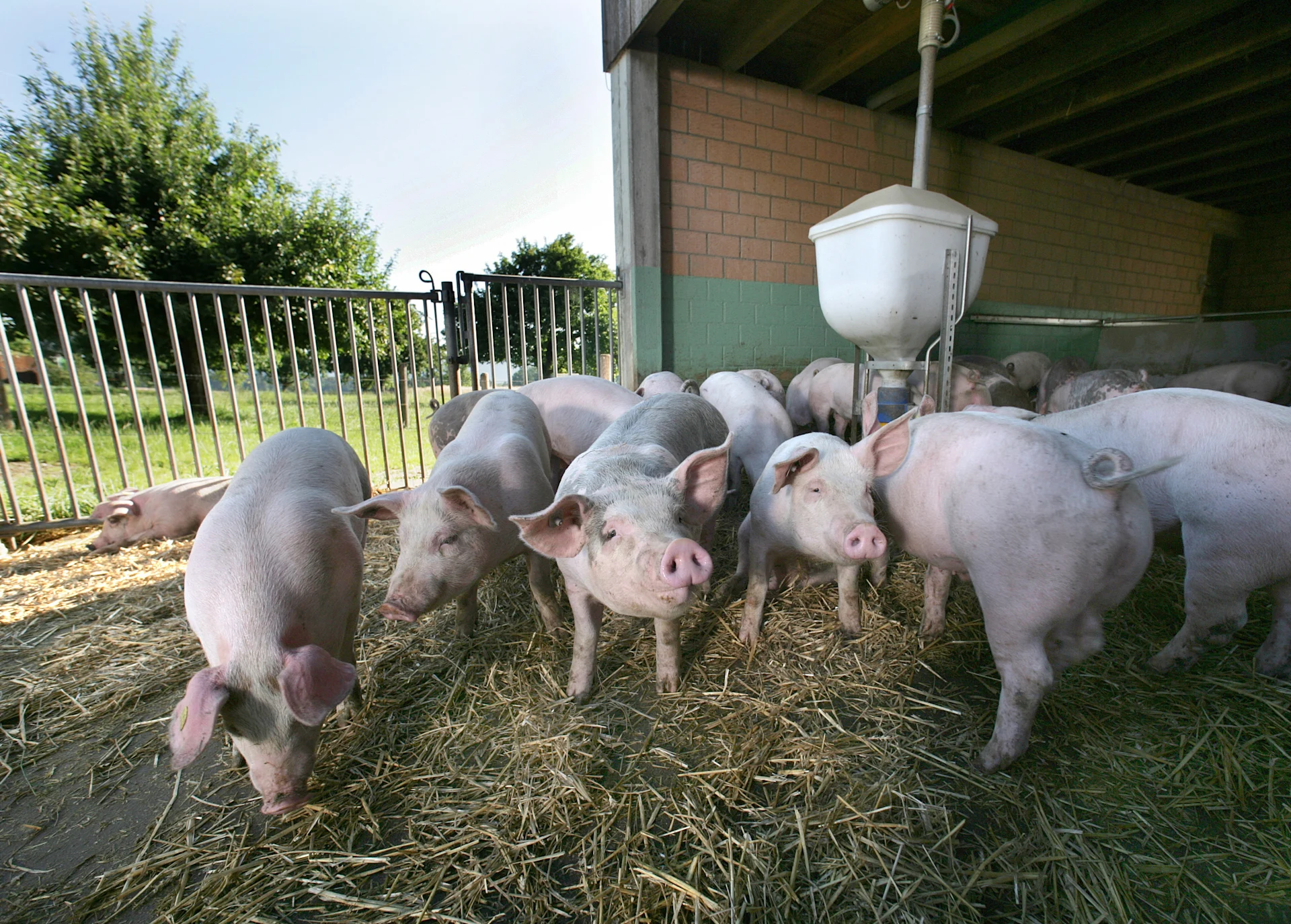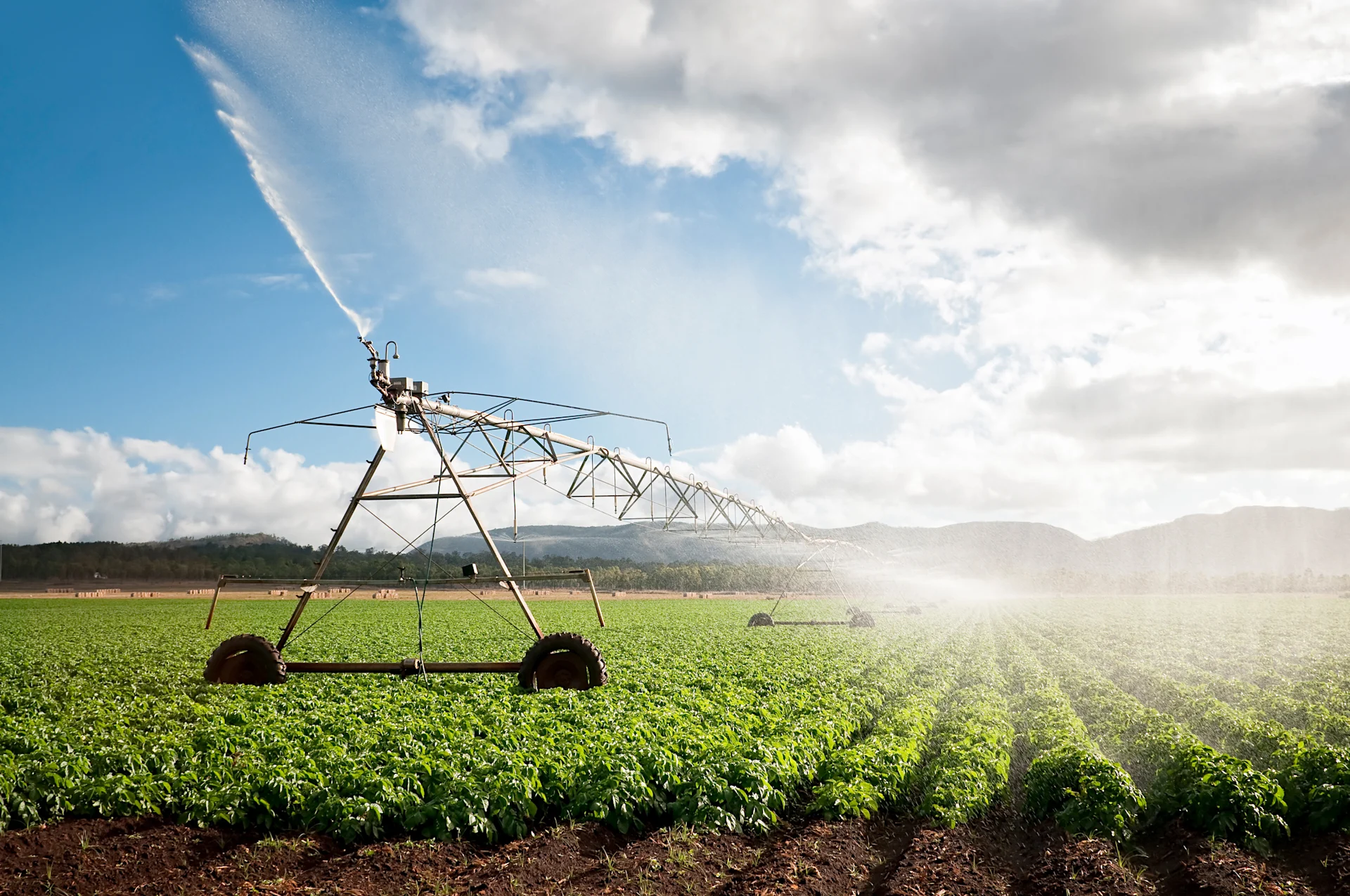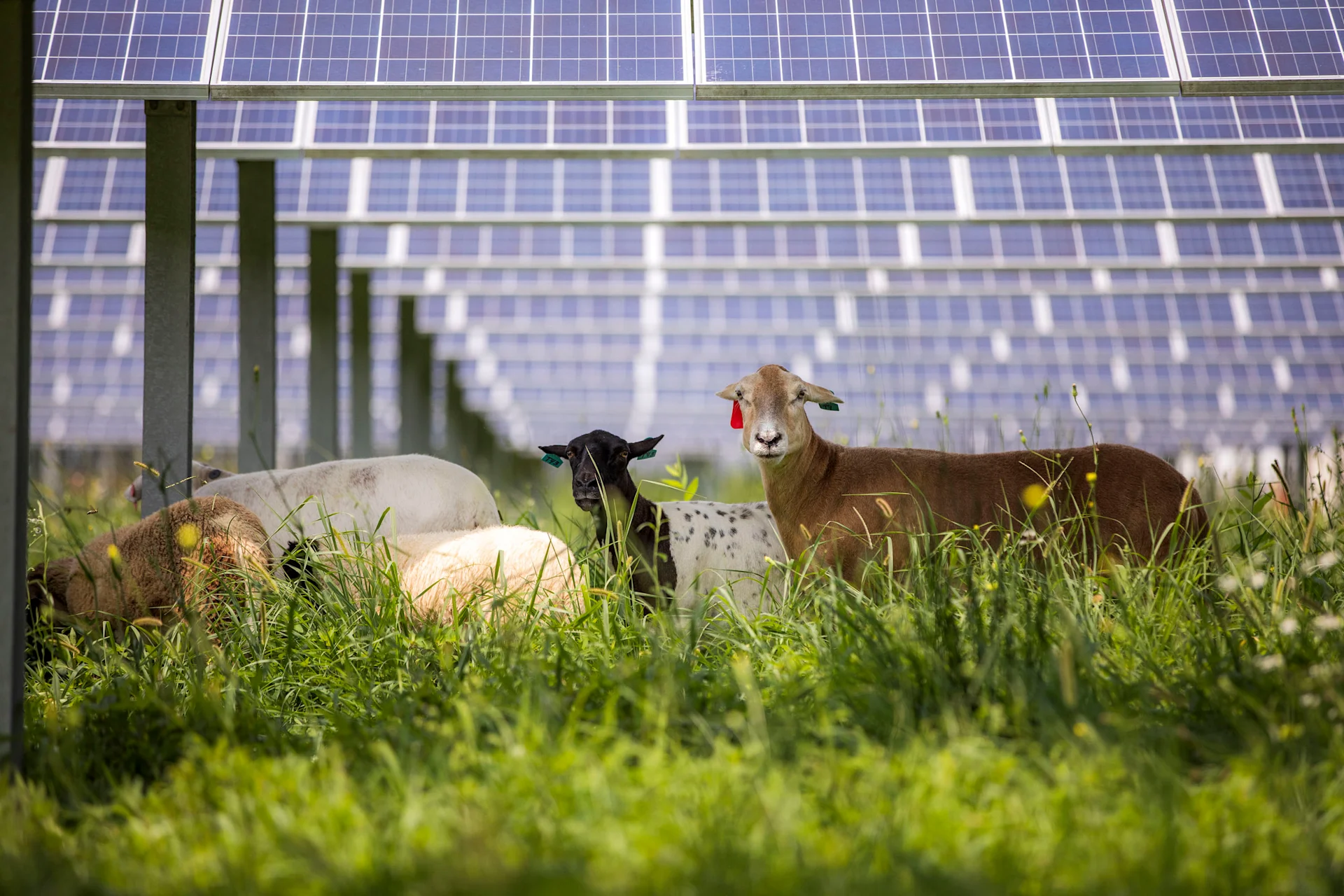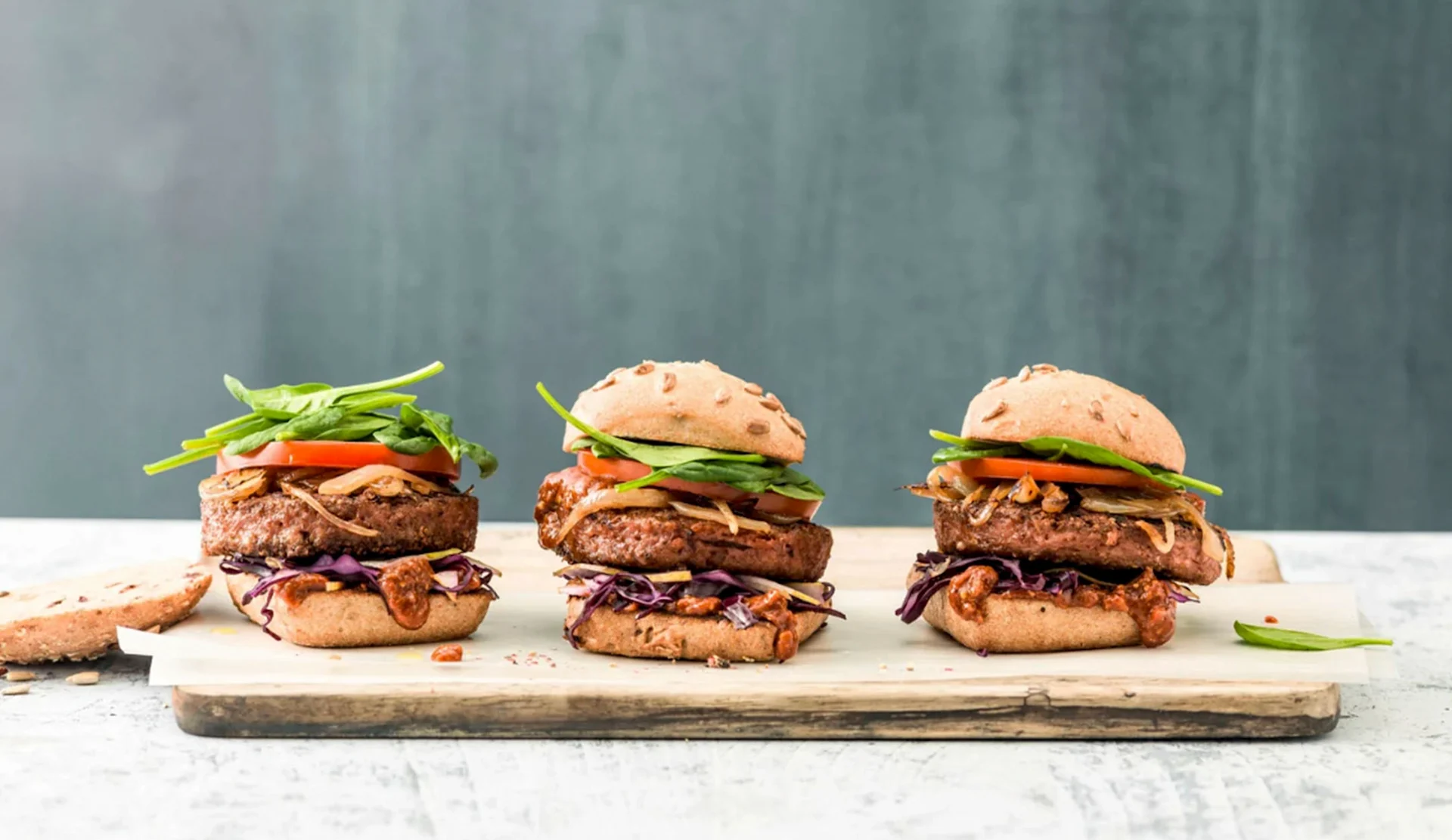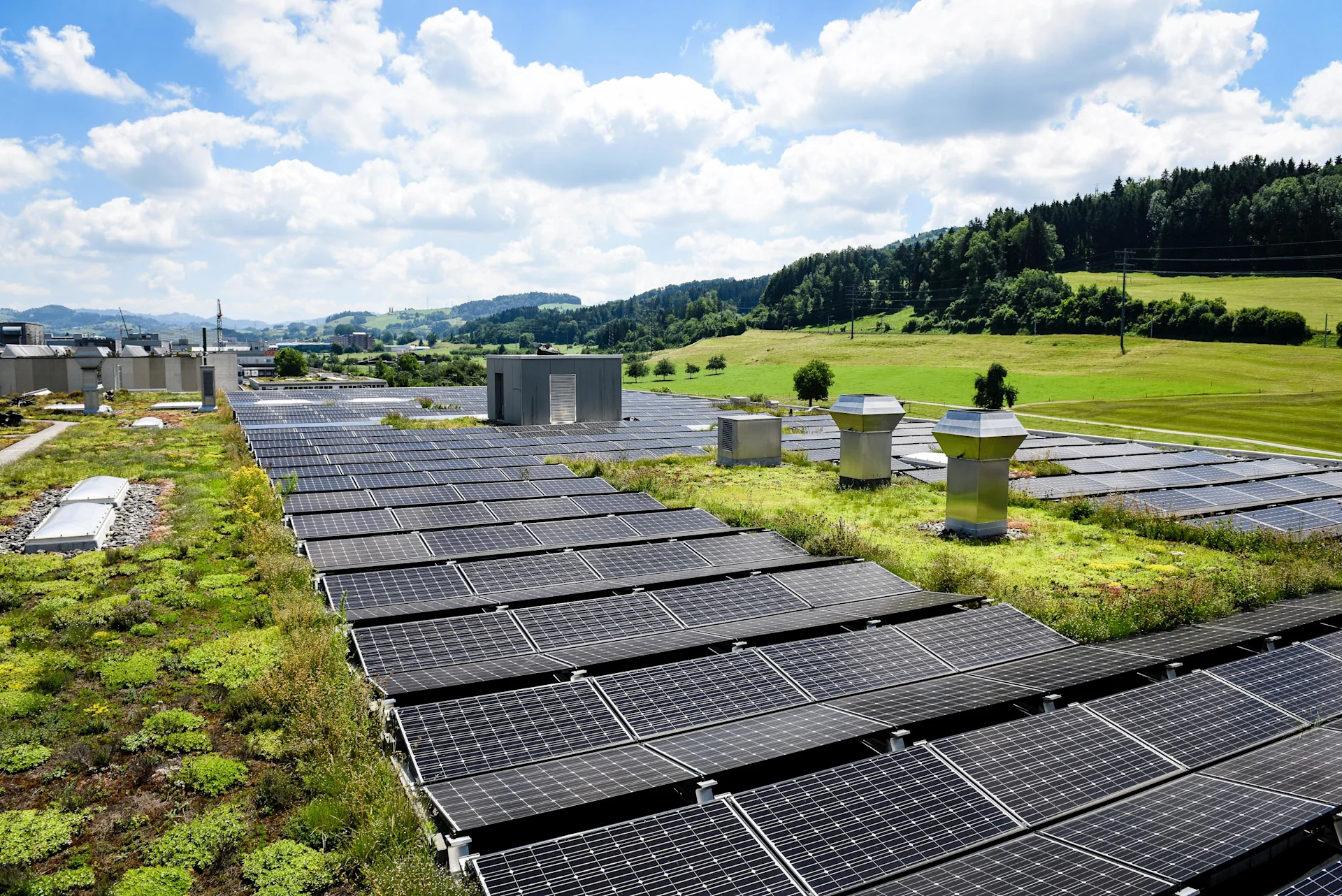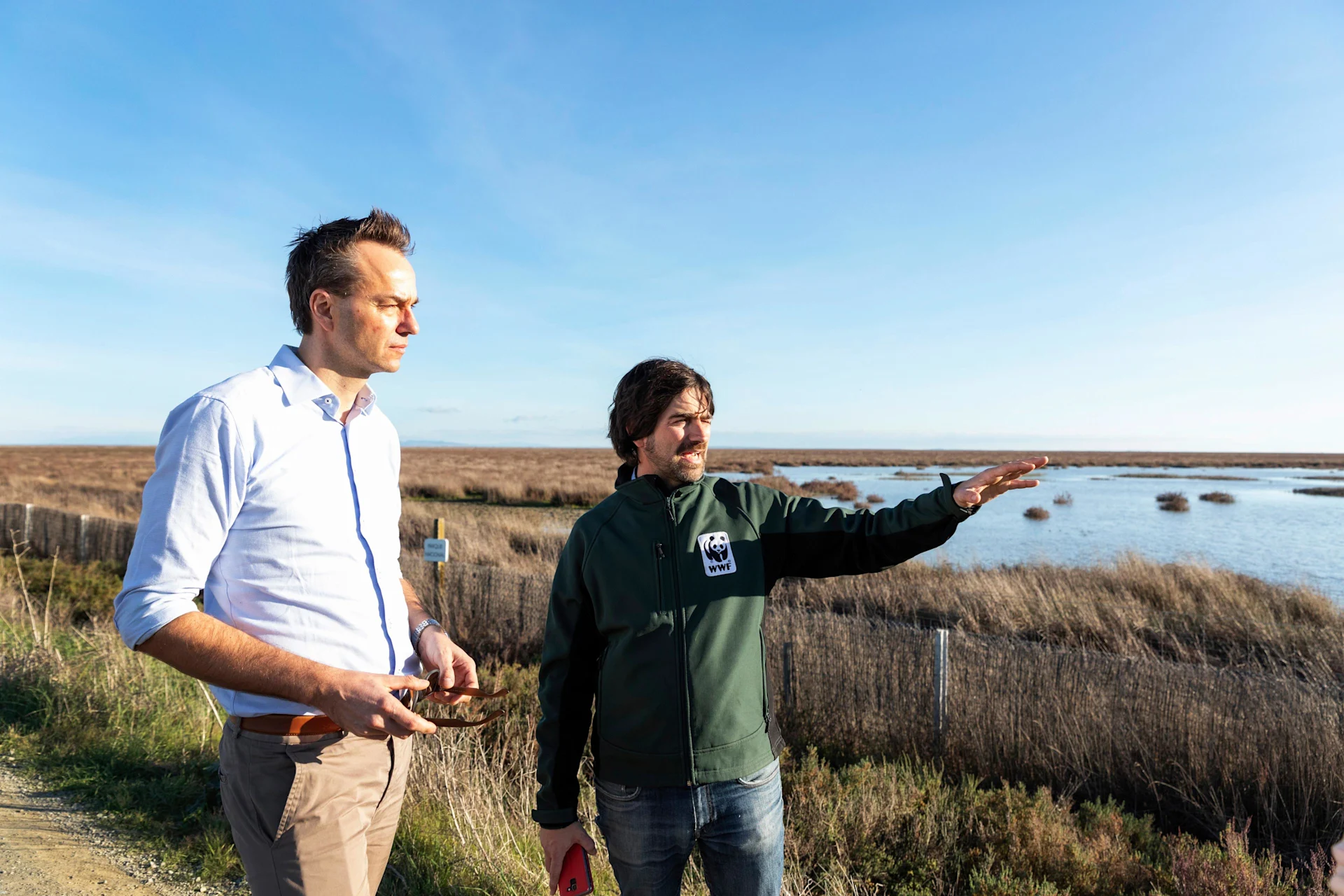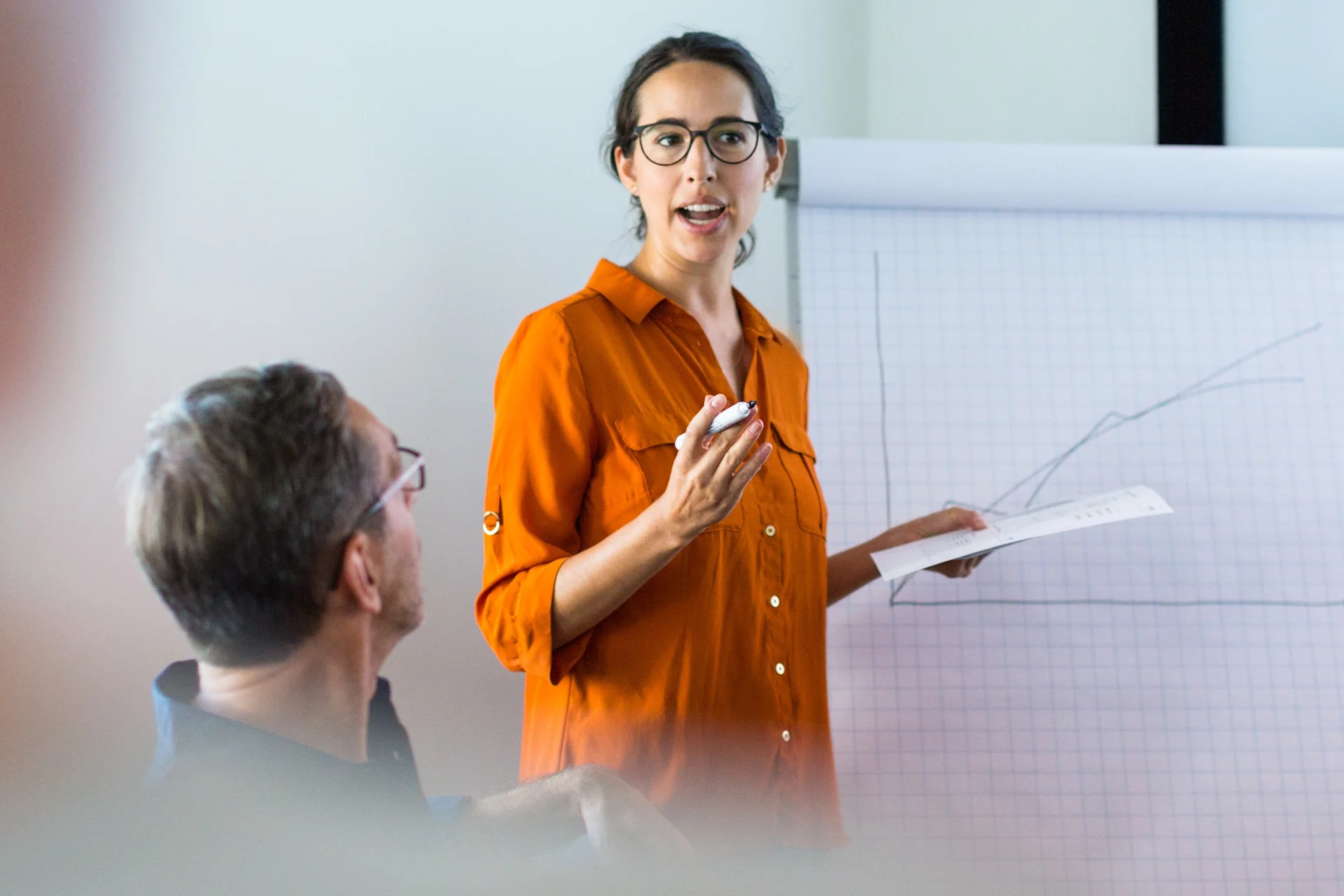Action fields
The 2020-2025 range
Making our product range more sustainable
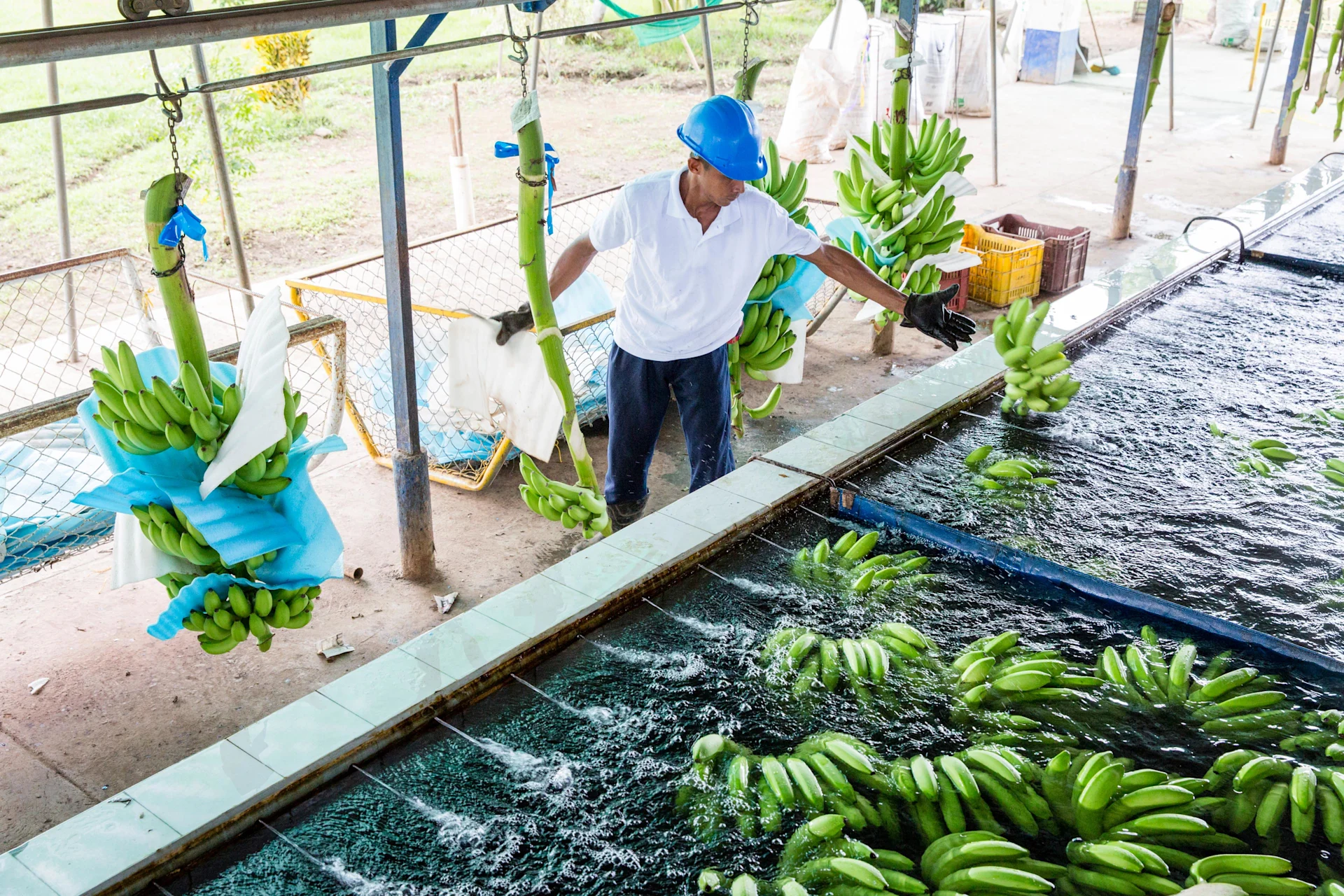
As a retailer and producer, we have a major influence on the origin and quality of our products, which is why we focus on ensuring responsible raw material procurement, transparency and fair working conditions for everyone involved along the entire value-added chain.
Why we do this
The Migros Group is an all-round service provider and offers a wide range of products and services. Ensuring our product range and services are as sustainable as possible helps to reduce the impact of consumption on people and the environment. This applies in particular to the areas that account for the majority of our sales: food and products from the near-food and non-food categories.
Influence of the Migros Group
From the extraction of raw materials through to the manufacture and sale of products – we have an influence on the sustainability of our products and services along the entire value-added chain.
Upstream, the aim is to procure raw materials such as coffee, cocoa, palm oil, fish and wood from sustainable production so as to ensure high standards of animal welfare and fair working conditions for suppliers and producers.
Downstream, we want to offer products that are as healthy as possible and provide our customers with guidance and transparency.
This means that our approach takes into account the entire value-added chain.
Our Group-wide approaches
We use sustainable raw materials and continuously work to minimise the negative impact on people and the environment caused by the extraction of these materials.
We provide transparent information about our products and services at all stages of the value-added chain.
We are constantly expanding our range of sustainable products and services and continuously increasing sales in this area.
How we make our product range more sustainable
In Cooperative Retailing, we are going beyond the Group-wide approaches and have organised our activities according to the following priority areas:
In Cooperative Retailing, we have set ourselves specific goals to make our product range and services more sustainable. Cooperative Retailing includes the following:
Supermarkets and hypermarkets
Wholesale
Gastronomy
Specialist markets
Club Schools
Online supermarket
The strategic priorities and goals are reviewed and adjusted if necessary as part of business changes in the Migros Group and revision of the Sustainability Strategy.
Raw materials and products
By sourcing and processing raw materials and offering more sustainable products, we have a major influence on the social and environmental conditions along our supply chains. Find out more about these impacts and our strategic approach to raw materials.
Our approaches
We implement ambitious sustainability requirements for all raw materials.
When it comes to critical raw materials, we aim to improve sustainability by implementing projects at source.
We are continuously increasing the proportion/sales of sustainable products/brands.
Our targets
By the end of 2025, we want 100% of the relevant raw materials for own-brand food products in our supermarkets and hypermarkets (including Migros Online) to meet the defined sustainability requirements.
By the end of 2025, we want 75% of the relevant raw materials for non-food products in our supermarkets and hypermarkets (including Migros Online) to meet the defined sustainability requirements.
By the end of 2025, we want 57% of the relevant raw materials for non-food products in our specialist markets to meet the defined sustainability requirements.
By the end of 2025, we aim to have improved the sustainability of critical raw materials for our own brands in our supermarkets and hypermarkets (including Migros Online) through the implementation of projects at source (stage one of the value-added chain).
By the end of 2025, we aim to have increased sales of sustainable products in our supermarkets and hypermarkets (including Migros Online) to 35%.
By the end of 2025, we aim to have increased sales of sustainable products in our specialist markets to 18.7%.
The strategic priorities and goals are reviewed and adjusted if necessary as part of business changes in the Migros Group and revision of the Sustainability Strategy.
All targets in the field of “raw materials and products” follow the Sustainable Development Goals (SDG)
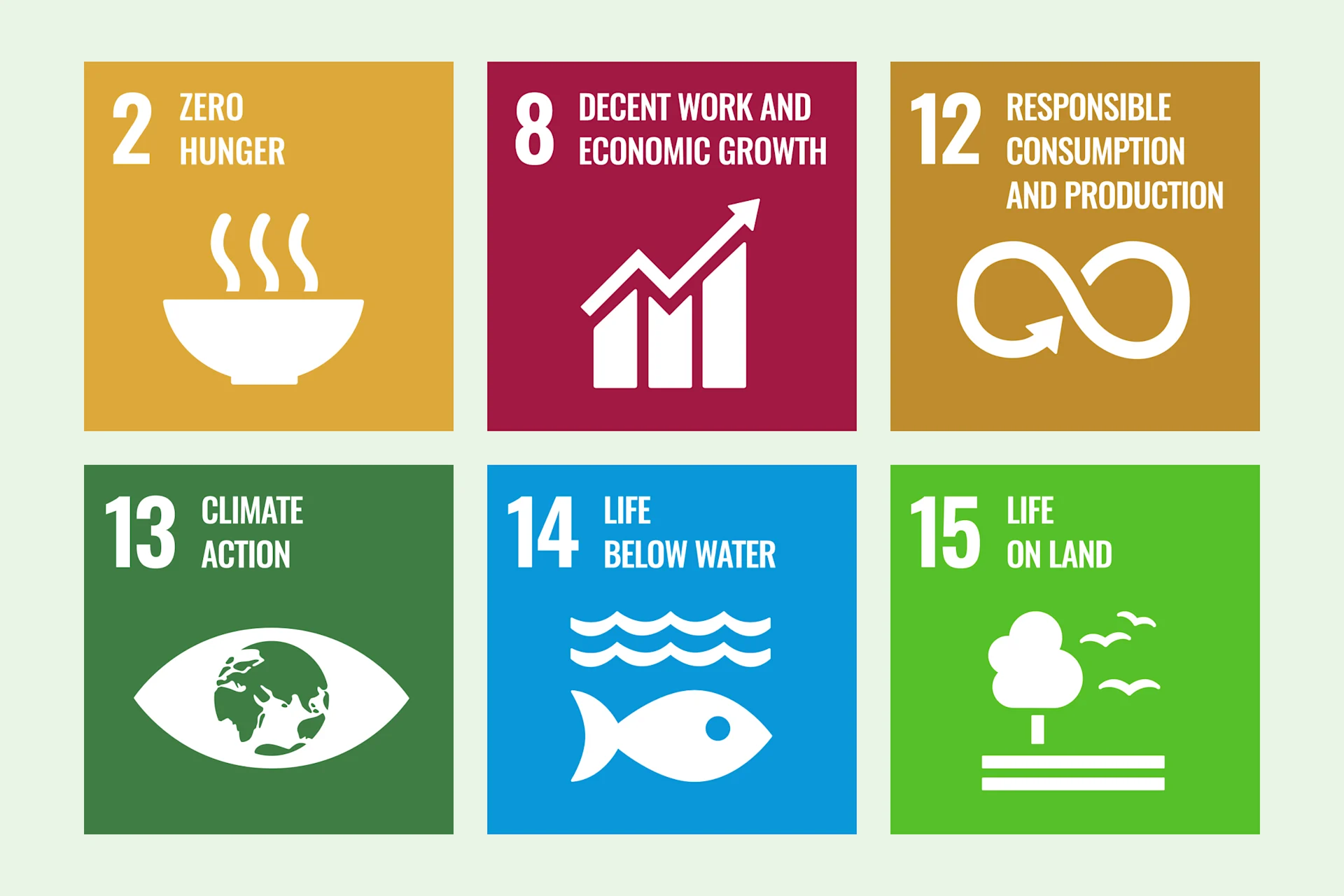
Our raw materials and products targets pursue SDGs 2, 8, 12, 13, 14 and 15. Sustainable procurement
We ensure that our products and services are produced responsibly. The measures we implement are aimed at protecting people, animals and the environment. Learn more about our environmental and social standards.
Our approaches
We are broadening the way in which we review socially responsible working conditions at the final processing stage and during cultivation.
We are increasing our activities in the area of supplier empowerment and using new methods to help suppliers and producers develop sustainably in terms of working conditions.
Ethical procurement principles constitute a fundamental consideration for us during the purchasing process.
We are placing an increasing emphasis on initiating and promoting projects within our value-added chains and addressing the specific needs of local communities, so as to support their sustainable development and minimise negative impacts.
We are also establishing an operational environmental management system within our supply chain and strengthening supplier empowerment.
Our targets
By the end of 2025, the producers of 90% of the suppliers of Migros own brands in our supermarkets and hypermarkets (including Migros Online) as well as in our specialist markets with articles from high-risk countries will have been verified to ensure socially responsible working conditions.
By the end of 2025, we want to have carried out at least 200 empowerment activities to improve working conditions in our supply chains. This applies to our supermarkets and hypermarkets, including Migros Online, as well as to our specialist markets.
By the end of 2025, we want sustainable procurement principles to be an integral part of the procurement process in our supermarkets and hypermarkets.
By the end of 2025, we aim to have supported five projects to improve the education or health of marginalised groups (especially migrant workers, women, children) involved in our value-added chains. This applies to our supermarkets and hypermarkets, our specialist markets and selected supply chains with potentially negative externalities from agriculture or processing. Through these projects, we aim to reach at least 5,000 people.
By the end of 2025, 15% of suppliers of products from high-risk countries to our supermarkets and hypermarkets (including Migros Online) as well as to our specialist markets will have integrated the producers (last processing stage) into the operational environmental management process.
By the end of 2025, we aim to have supported three projects in our supply chain that reduce the wage gap to a living wage. This applies to our supermarkets and hypermarkets, including Migros Online.
All targets in the field of “sustainable procurement” follow the Sustainable Development Goals (SDG)
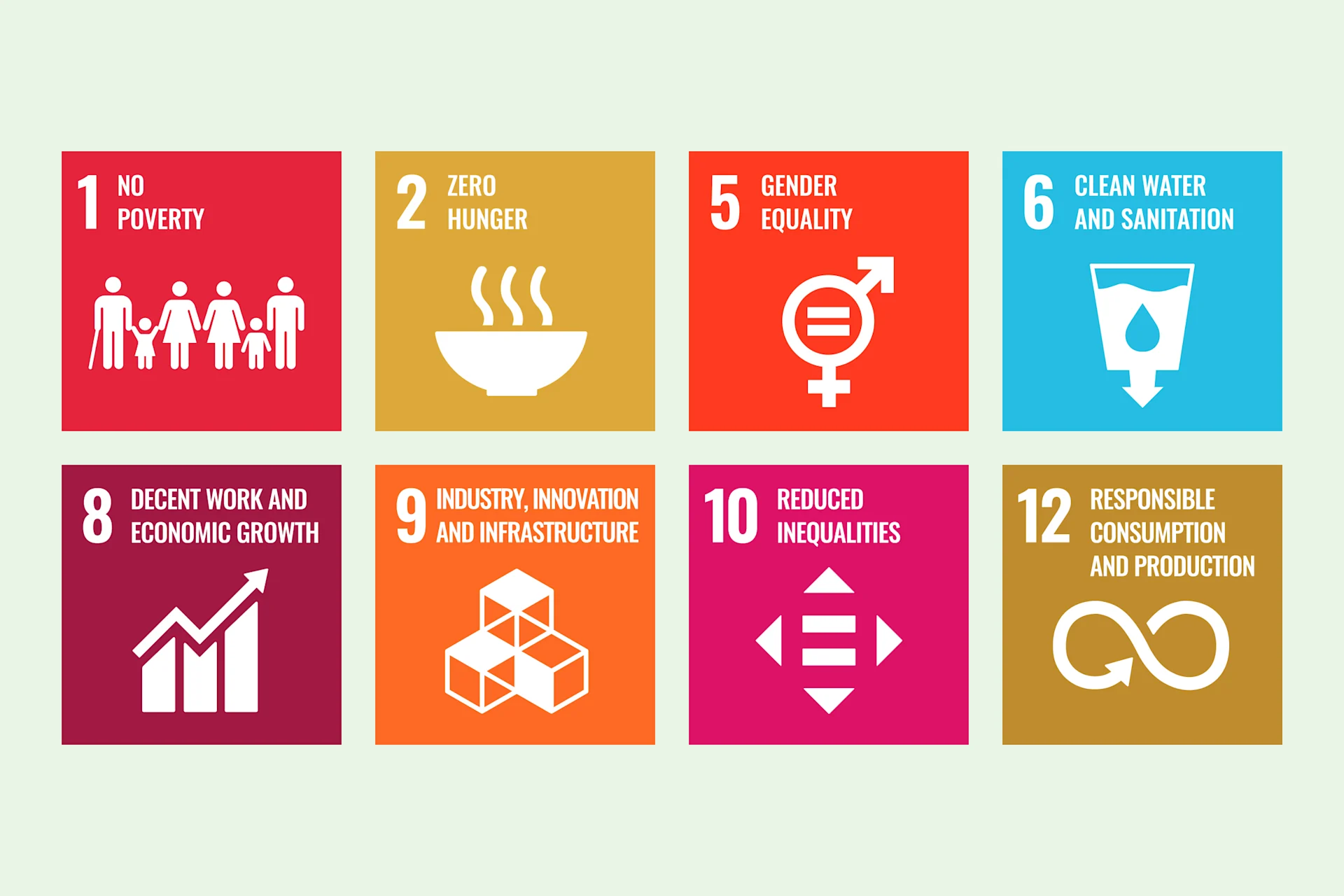
Our procurement targets pursue SDGs 1, 2, 5, 6, 8, 9, 10 and 12. Transparency
Transparency in relation to the origin and manufacturing conditions of our products is the basis for identifying negative impacts and making continuous progress. Especially with complex and multi-stage supply chains – such as ours – this is not a matter of course. It is therefore important that we map information about our products and suppliers centrally in our IT systems.
Transparency also means making the social and ecological impact of our products visible for our customers and enabling them to make a conscious purchasing decision.
Learn more about our transparency guidelines.Our approach
We are increasing transparency for relevant products and stakeholders.
Our targets
By the end of 2025, we want to have published information on the supply chain for defined supermarket and hypermarket (including Migros Online) and specialist market products (with a focus on critical raw materials and producers from high-risk countries).
By the end of 2025, we want to have recorded sustainability information in our IT systems for at least 95% of items in our supermarkets and hypermarkets (including Migros Online) as well as in our specialist markets.
By 2025, we want all our own-brand products in supermarkets and hypermarkets (including Migros Online) to feature the M-Check on the packaging.
All targets in the field of “transparency” follow the Sustainable Development Goals (SDG)
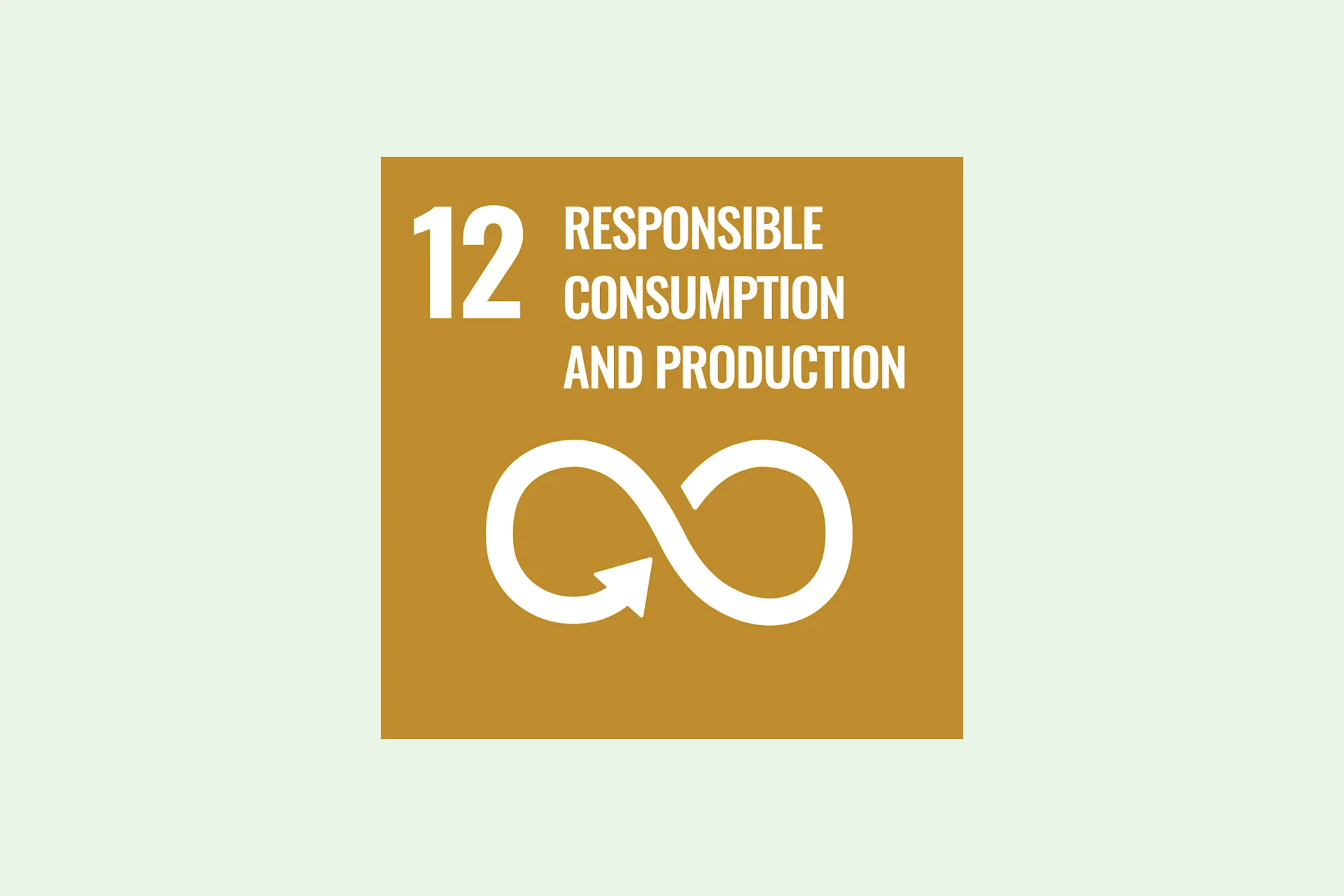
Our transparency targets pursue SDG 12. Animal welfare
Detailed information on the impacts of and our strategy in the field of animal welfare can be found in our animal welfare policy.
Our approach
We are constantly improving animal welfare for animal products.
Our target
By 2025, we aim to have increased the animal welfare of our own-brand products in supermarkets and hypermarkets (including Migros Online) to at least two stars in the M-Check animal welfare rating.
The target in the field of “animal welfare” follows the Sustainable Development Goals (SDG)

Our animal welfare target pursues SDG 2, 3 and 12. Water
Water scarcity is a global problem caused by population growth, inefficient water use, pollution and climate change. The impacts of water scarcity are far-reaching, affecting human health, nutrition and the economy. Addressing water scarcity requires comprehensive measures that must be implemented jointly by all stakeholders.
Our influence
The production and distribution of food products creates our largest water footprint.
Upstream
In upstream processes, the cultivation of raw materials for our products has the greatest impact on water resources. Some raw materials are grown in water-critical regions where agriculture requires large quantities of good-quality water. Pesticides and fertilisers used in agriculture can also enter rivers, lakes and streams when they run off from treated fields in rainwater. The discharge of pesticides and fertilisers into surface water can have a negative impact on aquatic ecosystems by affecting aquatic organisms and disturbing the ecological balance.
Find out more about our influence on the extraction of raw materials.
Operations
In operations, water is used by production processes and for the cleaning of sites (industrial and stores) and machinery. This also creates wastewater.
Downstream
Downstream, food has a small impact on water usage and wastewater.Our approach
We are reducing the water footprint in our value-added chain to an environmentally sustainable level (Planetary Boundaries), taking into account specific regional water risks.
More about our environmental standards
Our target
By the end of 2025, we want to have reduced our water footprint for our supermarkets and hypermarkets in water-critical areas.
The target in the field of “water” follows the Sustainable Development Goals (SDG)
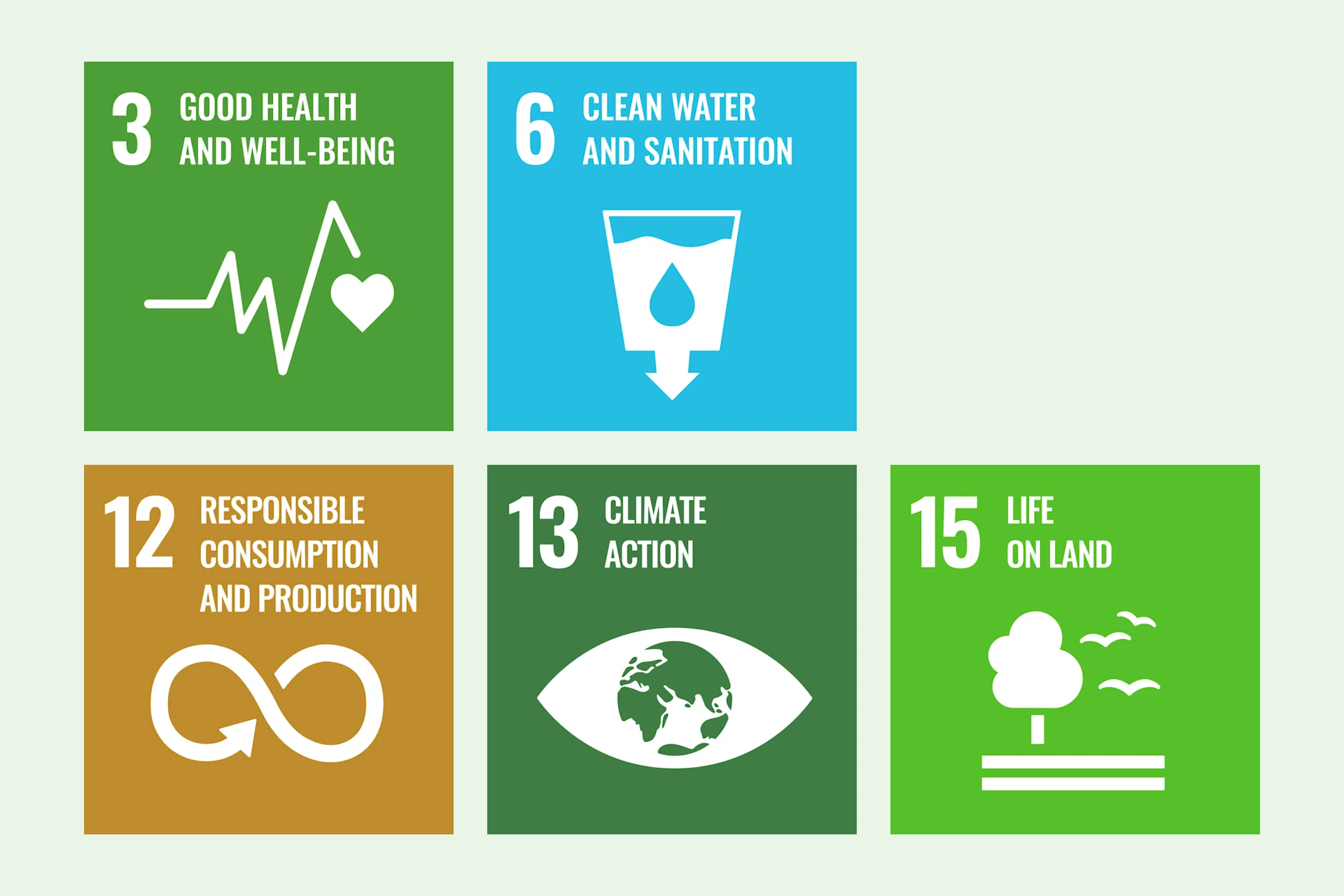
Our water targets pursue SDGs 3, 6, 12, 13 and 15. Biodiversity
Biodiversity conservation is important to ensure the preservation of animal and plant species, genetic diversity within species and different ecosystems (habitats), such as forests, peatlands, etc. In addition, intact ecosystems provide clean water and air and contribute to food security and human health.
According to the World Economic Forum’s Global Risk Report 2023, biodiversity loss is considered one of the greatest risks worldwide.
Biodiversity loss is driven by a variety of factors, which are often interlinked. Here are some of the main drivers of biodiversity loss:Land-use changes: the conversion of natural areas into agricultural land, roads, cities and industrial areas leads to fragmentation, degradation and ultimately the destruction of entire ecosystems, resulting in the loss of habitats for animal and plant species.
Overexploitation of resources: the excessive use of natural resources such as fish stocks, forests, soil and water can lead to a sharp decline in biodiversity.
Environmental pollution: intensive use of pesticides and plant protection products in agriculture, as well as pollutants from industry, can be released into the environment. Such emissions pollute the air, water and soil and have a negative impact on biodiversity.
Climate change: changes in the climate, especially global warming and water scarcity, affect ecosystems. For example, wetlands are drying out. This habitat is then lost for many animal and plant species. Some species are specialised in such environments and are unable to adapt to new conditions.
Invasive species: due to increasing globalisation, organisms are intentionally or unintentionally spread beyond natural borders. The spread of alien species can lead to the displacement of native flora and fauna.
Overfishing: the over-exploitation of fish and other marine resources can lead to the collapse of fish stocks and a loss of biodiversity in aquatic ecosystems.
Our influence
Upstream
With the distribution and production of everyday products and consumer goods, our business model is based on raw materials. We have a major impact on biodiversity through the intensive use of land and water through agriculture, forestry, fishing and aquaculture along our global supply chains. At the same time, we are dependent on intact ecosystems and their services, such as clean water, fertile soil, pollination, etc., in order to be able to actually manufacture our products.
Raw materials from the global south, such as coffee, cocoa, palm oil, beef, soya and wood, are particularly critical. Their cultivation or farming often takes place in particularly biodiverse areas, where the risk of deforestation is high. Peat extraction in moorland areas for use in bagged soil or for the production of ornamental plants, vegetables and herbs is also problematic.
Downstream
The use of certain products can also have a negative impact on biodiversity, such as the spread of invasive plants (neophytes) and the use of pesticides in gardens. In addition, excessive consumption of everyday products in general, especially food waste, has a negative impact on biodiversity. This is because the more land is required for production, the greater the pressure on ecosystems (e.g. deforestation for more agricultural land).
Overall, we emit greenhouse gases through many activities and thus contribute to climate change. This in turn has a negative effect on biodiversity.Our approaches
We are reducing the biodiversity footprint of our value-added chain by working to conserve the natural environment and promote biodiversity.
When it comes to raw materials, we rely on certified raw materials or label products.
You can find out more about our guidelines and commitments on the environmental standards page
Our targets
By the end of 2025, we want to have increased the proportion of sales for label products that contribute to the preservation and promotion of biodiversity in our supermarkets and hypermarkets (including Migros Online) as well as in our Migros specialist markets.
By the end of 2025, we aim to ensure that our products and the procurement of biodiversity-relevant raw materials for our supermarkets and hypermarkets (including Migros Online) as well as for specialist markets do not destroy intact ecosystems.
All targets in the field of “biodiversity” follow the Sustainable Development Goals (SDG)
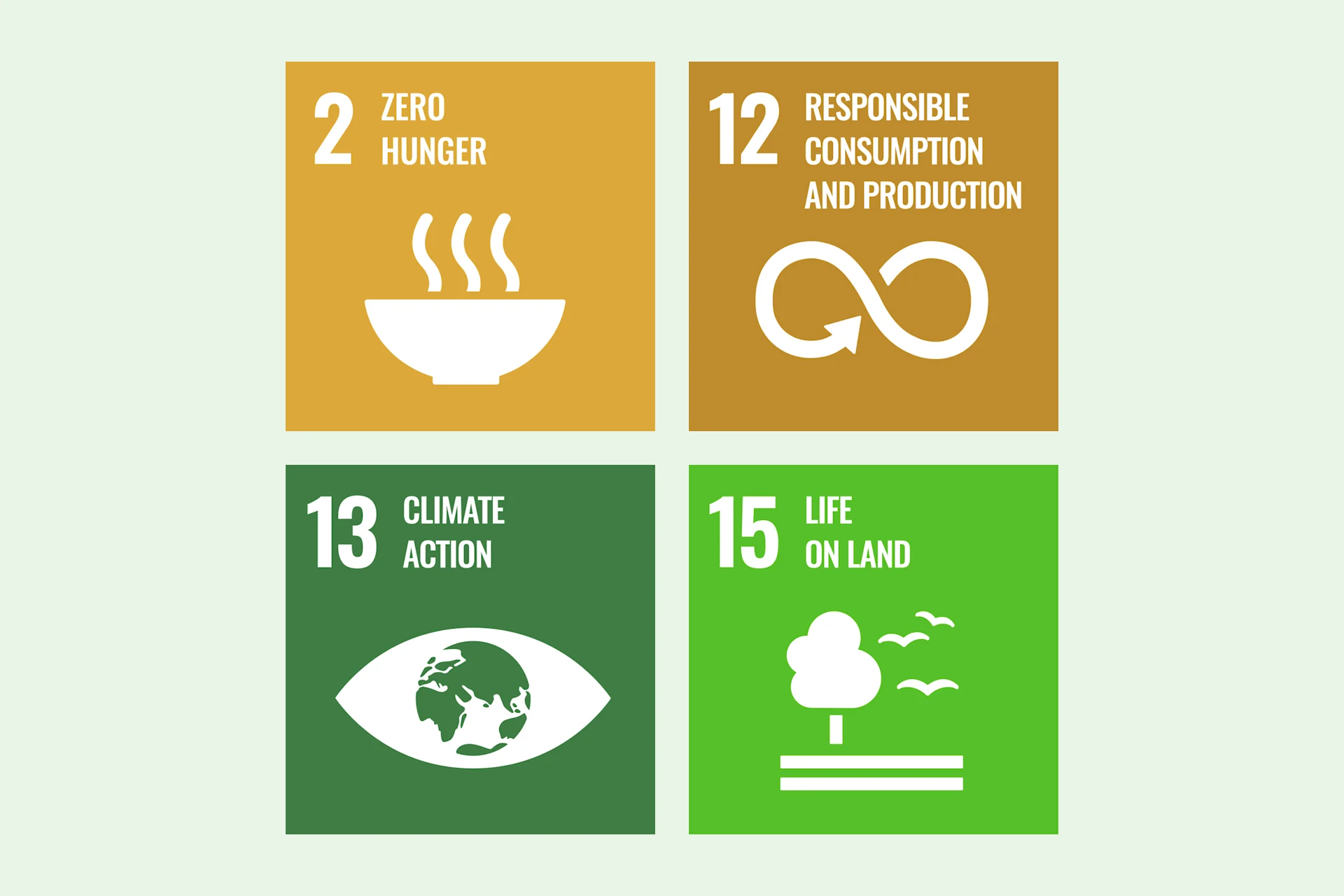
Our biodiversity targets pursue SDGs 2, 12, 13 and 15.
We research to help create a sustainable product range
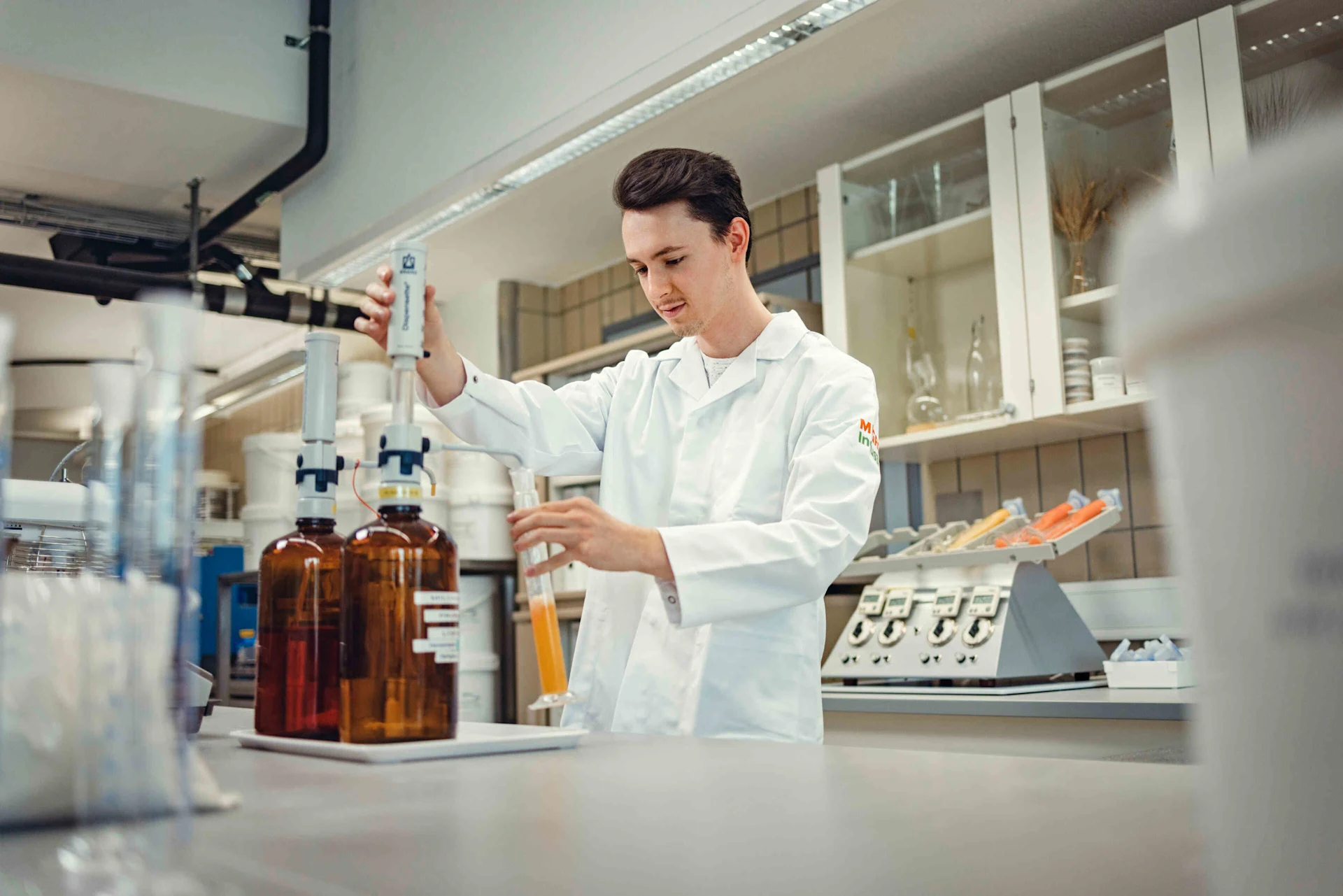
We collaborate with research institutions to make the future more sustainable. Find out more about our projects!
The path to a sustainable product rang
We create a sustainable product range for people, animals and the environment. Find out exactly how we do this in our Stories!

